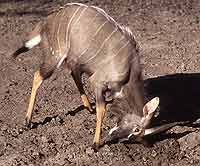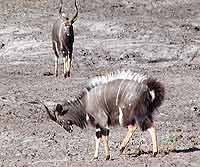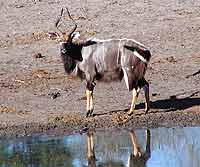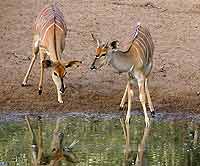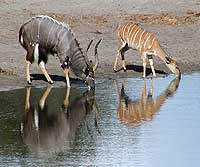Contact Details: Scotch Macaskill, Dirt Road Traders, Currys Post Road, Howick, KwaZulu-Natal, South Africa. Tel: +27 (0)82 578 2329. Privacy: Your privacy is guaranteed. See our Privacy Policy for more. This site accepts advertising and other forms of compensation - see Disclosure and Advertising for details. Site updated: 2022. Copyright © 2002 - 2022 Scotch Macaskill

| ||||||||||
|
||||||||||
|
SEE ALL
|
Nyala Lateral Display Keeps Rivals at Bayby Scotch MacaskillA friend recently gave me a superb book about African wildlife. I'm a late starter who has much to learn, so his choice - The Behavior Guide to African Mammals - could not have been more appropriate. The book, by Richard Despard Estes, was conceived for the benefit of visitors to African parks. On that level it serves as an essential field guide to those with more than a passing interest in African animals, but it's also sufficiently detailed to serve as a reference for students and behavioral scientists. When visiting African game parks, one often sees animals acting in strange or inexplicable ways. It's easy to simply accept this as "animal behavior" - something we're not expected to understand. But a book like this makes game viewing much more rewarding and less of a mystery. Instead of thinking "mmm, odd behavior" and moving on, one can better understand what's happening now, possibly what happened before, and what's likely to happen next. Dominance/Threat DisplaysWhile skimming through the book, a sketch caught my eye - it shows a Nyala bull, head sideways, rubbing one horn on the ground. I'd seen this before - at Ndumo Game Reserve in northern KwaZulu-Natal - and at the time assumed the animal was rubbing its horn to relieve some sort of irritation.But no, it's actually one of the nyala's dominance/threat displays, that include "lateral presentation, stiff-legged approach and ground- and object-horning". Return to Wildlife Articles |
|||||||||
|
|
||||||||||
